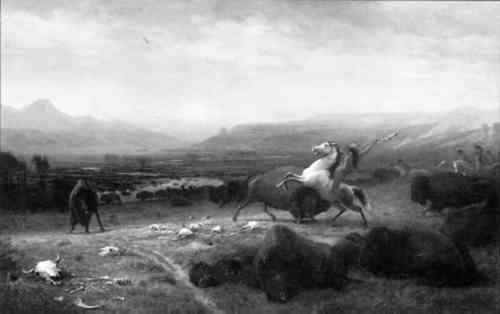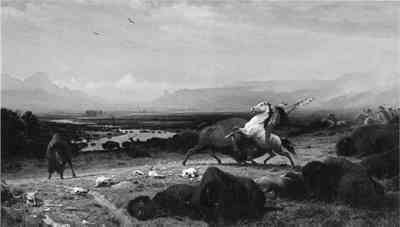CORCORAN AND CODY: THE TWO VERSIONS OF THE LAST OF THE BUFFALODARE MYERS HARTWELL, & HELEN MAR PARKIN
1 INTRODUCTIONIn 1888, in preparation for the Paris Exposition the following year, Albert Bierstadt (1830–1902) began work on the last of his large Western showpieces and his most important late painting, The Last of the Buffalo. Probably because by this date Bierstadt's work was considered pass�, the painting was rejected by the American selection committee for the exposition, causing a minor sensation in the press and much pain to the artist. Bierstadt subsequently sent the painting to the exposition on his own, which he was entitled to do as a Chevalier of the Legion of Honor (Hendricks 1988). Today, of course, the painting is one of the icons of American art and among the most treasured holdings of the Corcoran Gallery of Art, Washington, D.C. (fig. 1).
For many years the Corcoran painting was considered to be the only version of The Last of the Buffalo, but about 1955 another was found in England and brought to the United States by a dealer (Nicholson 1956). The second painting eventually entered the collection of the Buffalo Bill Historical Center in Cody, Wyoming (fig. 2). By coincidence, both works underwent conservation treatment in 1984–85, precipitating this investigation into the relationship of the two paintings. The Corcoran painting was treated by the museum's conservator, Dare Myers Hartwell; the Cody painting was treated by Perry Huston and Helen Mar Parkin of
|

